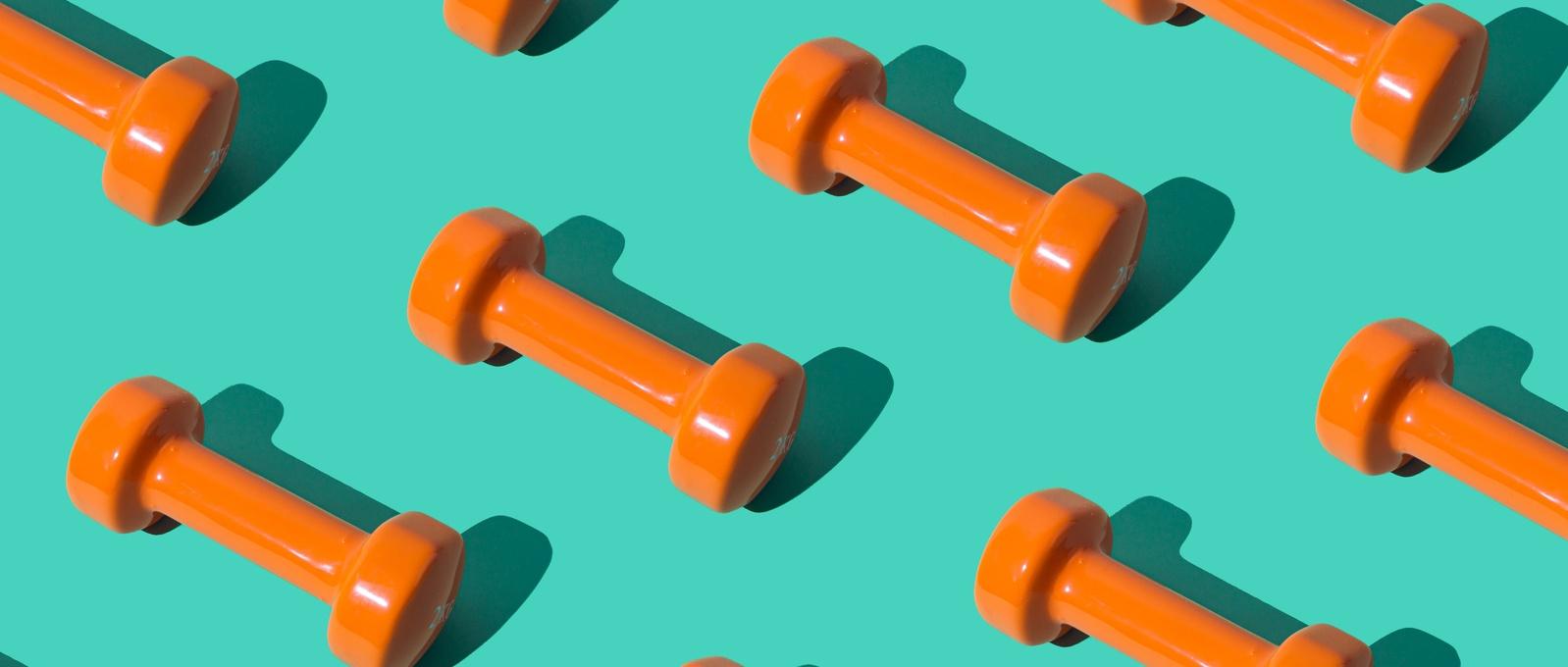
Kniegesundheit: Wie man Knieverletzungen vorbeugen kann
Peer reviewed by Dr Colin Tidy, MRCGPLast updated by Lynn StephenLast updated 24 Sept 2025
- HerunterladenHerunterladen
- Teilen Sie
- Sprache
- Diskussion
Solange sie gesund sind, machen wir uns wenig Gedanken über sie, aber schmerzende und geschädigte Knie können eine enorme Schwächung darstellen. Unsere Knie sind im Laufe des Lebens Verschleißerscheinungen ausgesetzt, was dazu führt, dass sich viele Menschen über 50 einer Knieoperation oder einem Knieersatz unterziehen müssen. Sie können jedoch das Risiko von Knieverletzungen im späteren Leben verringern, indem Sie einen aktiven Lebensstil pflegen, der die Gesundheit Ihrer Knie fördert.
In diesem Artikel:
Lesen Sie unten weiter
Wie man Knieverletzungen vorbeugen kann
Im Laufe unseres Lebens sind unsere Knie Verschleißerscheinungen unterworfen. Wir können jedoch dazu beitragen, Knieverletzungen durch positive Lebensgewohnheiten zu vermeiden. Wenn es doch zu einer Verletzung kommt, kann eine frühzeitige Physiotherapie zu einer raschen Genesung beitragen.
Healthy lifestyle choices will greatly reduce the chance of joint, cartilage, or ligament damage. This includes keeping to a healthy weight and exercising regularly to keep muscles strong and joints mobile.
If you do experience knee injury, physiotherapy and the right exercises will aid your recovery. They will also often make the issue less likely to reoccur, become worse, or require surgery later. While usually successful, surgery is a major undertaking.
Hila Glick, Vice President for Physiotherapy and Head of Clinical Team at Onestep, advises that the best way to take care of your knees is to keep active, to strengthen the muscles around the knees and the entire body, as well as to work on muscle flexibility and length.
Kraftübungen für die Beine
Das Knie ist eines der größten Gelenke des Körpers. Es verbindet die Ober- und Unterschenkelknochen und ermöglicht eine Vielzahl von Bewegungen und Manövern. Die Stärke dieser Knochen und der sie umgebenden Muskeln stützt das Knie entscheidend und trägt dazu bei, die Belastung und das Gewicht, das auf ihm lastet, zu verringern.
Maintaining leg muscle strength throughout your life is important. Strength training exercises can improve bone density by up to 3%, and slow down the rate of bone and muscle loss associated with ageing.
Danielle Wills, yoga business coach and specialist, recommends focussing on exercises that target your hamstrings, quads, glutes, and hip flexors, and slowly increasing the amount of weight you use.
Stretching und Beweglichkeitstraining
By stretching regularly, you can help prevent knee injury by keeping your supporting muscles long and flexible. This will increase the range of motion (ROM) in your knees, protect against the tightness in the surrounding muscles, and improve your balance - reducing your chance of falls and injuries.
Wills says: "Exercises such as yogi squats and child's pose can help stretch the muscles that wrap around the joints. Remember only to go to where you feel a stretch, never to the point of pain."
Kardio-Übungen mit geringer Belastung
As well as helping to build muscle, cardiovascular exercise, or cardio, keeps the circulation around your knees constant.
"The ligaments around your knees don’t get as much blood flow as other parts of the body," Wills explains. "It's important to engage in activities that keep flushing oxygen and nutrients through to these spaces."
This helps to keep knee cartilage healthy and may prevent atrophy - the deterioration of protective muscle and nerve tissue. While this is true of both high-impact and low-impact activities, low-impact cardio also limits the knee-jarring impact of your feet forcefully hitting the ground. For this reason, activities such as cycling and swimming are particularly effective at maintaining knee health.
Aufrechterhaltung eines gesunden Gewichts
Wills warns that major weight gain can add significant stress to your knees.
"Where possible, try to keep to a regular weight through exercise and healthy eating," she says.
The higher your body weight, the more force is exerted on your joints. Being overweight also increases your likelihood of injury and conditions affecting the joints, such as osteoarthritis and gout.
Was sind die häufigsten Arten von Knieverletzungen?
Glick explains that there are numerous types of knee injuries. The type of injury depends on the area that was injured, the severity, and a person’s physical background.
Some of the most common injuries include:
Verrenkungen der Kniescheibe.
Wenn Sie unter anhaltenden Knieschmerzen leiden, die Ihre Beweglichkeit einschränken, kann Ihnen ein Physiotherapeut helfen, das Problem zu diagnostizieren und einen maßgeschneiderten Behandlungsplan zu erstellen.
Lesen Sie unten weiter
Wie erholt man sich von einer Knieverletzung?
Die Genesung nach einer Knieverletzung umfasst in der Regel Übungen zur Verbesserung der Kraft und Beweglichkeit, die so durchgeführt werden, dass sie vor weiteren Schäden schützen. In vielen Fällen können physiotherapeutische Übungen den Bewegungsumfang wiederherstellen und dazu beitragen, eine Knieoperation zu vermeiden.
Glicks physiotherapeutische Übungen zur Vermeidung von Knieoperationen
Wiederholen Sie die Übung je nach Ihren Fähigkeiten 10 Mal oder öfter. Diese beliebten Übungen werden je nach Art der Verletzung modifiziert.
Kraftübungen:
Short arc quad - lie on your back and place a bolster under the knee of the quad you wish to strengthen. Slowly straighten your knee and tighten your quad until your leg is fully straightened.
Bridge - lie on your back with bent knees and feet flat on the floor. Push into your heels to lift your hips off the floor until your body forms a straight line between your knees and shoulders. Hold for two seconds, then lower.
Wall squats - stand with your back against a wall, legs hip-width apart and arms at your sides. Bend your knees and lower to a squatting position, until your thighs are parallel to the floor. Hold for two seconds and then rise to stand.
Dehnungsübungen:
Standing calf stretches - stand facing a wall with one foot in front of the other, front knee slightly bent. Keep your back knee straight, and your heel on the ground, and lean towards the wall. Hold for 20-30 seconds, then switch sides.
Standing quad stretches - face a stable surface. Bend the knee back towards your buttocks by holding your ankle. Hold for 20-30 seconds and switch legs.
Lying down hip flexor stretches - lie on your back, with bent knees and feet flat on the ground. Lift one knee towards your chest and hold it with your hands. Slide your other leg out straight, hold for 20-30 seconds, switch sides and repeat.
Wie man eine Knieverletzung nicht verschlimmert
Wenn Sie sicherstellen wollen, dass Sie Ihre Knieverletzung nicht verschlimmern, rät Glick zu Folgendem:
Ignorieren Sie Knieschmerzen nicht und machen Sie mit Ihrer bisherigen Routine weiter.
Bleiben Sie aktiv - Bewegung beugt einer Versteifung der Gelenke vor, bringt das Blut in Fluss und kann dafür sorgen, dass andere Körperteile durch die Kompensation keinen weiteren Schaden nehmen.
Lesen Sie unten weiter
Der Aufstieg der Online-Physiotherapie
Je nach Knieverletzung kann die Physiotherapie Ihnen helfen, sich zu erholen, eine Knieoperation zu verzögern oder zu vermeiden, Ihren Körper auf einen Eingriff vorzubereiten oder sich nach einer Operation zu erholen. Knieverletzungen sind jedoch oft lähmend und können den Besuch bei einem Physiotherapeuten unangenehm machen.
Vielleicht ziehen Sie es vor, eine Online-Plattform für Physiotherapie bequem von zu Hause aus zu nutzen. Diese bieten Ihnen mehr Flexibilität und Komfort.
Glick says that once you have the list of exercises and you feel comfortable performing them, you can then practise several times a day according to your schedule and routine.
Können Sie eine Knieoperation vermeiden?
While knee issues and knee injury can occur at any age, the vast majority of people requiring knee replacement surgery - the main type of knee operation - are aged 50 years and above, and around half are over 70 years. Age is a common contributing factor because over the course of your life your knees are subject to deterioration from wear and tear.
Looking after your knees is important at all ages, as placing them under excessive stress or incurring injuries can add to cumulative wear and tear in later life. As you get older your chance of developing conditions that affect your joints also increases. For example, osteoarthritis - the degeneration and inflammation of joint cartilage and surrounding bone tissue - is the most common cause of knee surgery.
Wills advises: "It's natural to be concerned about the potential of knee surgery. However, it's also important to put this into perspective and remember that genetics do play a big part."
Das heißt aber nicht, dass eine Knieoperation unvermeidlich ist. Gesunde Lebensgewohnheiten können vor übermäßigen Schäden schützen.
Was bedeutet es, wenn Sie eine Knieoperation benötigen?
Wenn Ihr Knie so stark abgenutzt, beschädigt oder verletzt ist, dass Physiotherapie allein nicht mehr ausreicht, um es zu rehabilitieren, kann eine Knieoperation Ihre Lebensqualität erheblich verbessern. Sie gehört zu den häufigsten elektiven orthopädischen Eingriffen und trägt dazu bei, dass in England und Wales jedes Jahr etwa 160.000 Knie- und Hüftprothesen ersetzt werden.
Glick advises: "It's important to note that while there are ways to help prevent knee surgery, in some cases surgery is the right thing to do. I believe that this should be a mutual decision, made by both the patient and the surgeon."
While knee surgery can cure your knee pain and give you a better range of motion, like all operations it carries health hazards and considerations. These can include infection and complications, such as deep vein thrombosis, like any surgery.
These days, knee replacements usually provide benefits for decades.
Dr Sarah Jarvis, GP and TV doctor, says that when she first became a GP 35 years ago, patients were advised that they might need further surgery after a decade or so.
She says: "That was a major consideration because the revision of knee replacement surgery carries a higher likelihood of complications than the original procedure. Today, by contrast, I can reassure my patients that more than 4 in 5 total knee replacements and 7 in 10 unicondylar knee replacements - where only a portion of the knee is resurfaced with plastic and metal components - last for 25 years."
Genauso wie die Physiotherapie Ihnen helfen kann, sich von Knieverletzungen zu erholen, kann sie auch nach einer Operation einen großen Unterschied für Ihr Ergebnis ausmachen. Eine fachkundige physiotherapeutische Betreuung und die regelmäßige Durchführung der empfohlenen Übungen können die Genesung beschleunigen, Sie zur Normalität zurückführen und dazu beitragen, Ihr neues Knie für die kommenden Jahre zu schützen.
Patienten wählen aus für Bewegung und körperliche Aktivität

Knochen, Gelenke und Muskeln
Die besten Übungen für Ihre Gelenke
Vielleicht haben Sie Bedenken, wie sich Bewegung auf Ihre Gelenke auswirkt, vor allem, wenn Sie bereits unter Gelenkschmerzen oder Steifheit leiden. Regelmäßige körperliche Betätigung kann jedoch hilfreich sein, um gesunde Gelenke zu schützen und in manchen Fällen sogar Gelenkschmerzen zu lindern. Entscheidend ist, dass man Übungen wählt, die die Gelenke nur wenig belasten, die Flexibilität verbessern und die Muskeln um die Gelenke herum aufbauen. Im Folgenden sprechen wir mit der Fitnessexpertin Laura Williams über die besten Übungen für Ihre Gelenke.
von Heather Ainsworth

Gesundes Leben
Die Vorteile eines abwechslungsreichen Trainings
Most of us have our favourite physical activities. But trying something new, or varying the exercise you do, can make a real difference to many areas of your overall health and fitness. We look at why you should switch up your exercise routine and try something different.
von Victoria Raw
Artikel Geschichte
Die Informationen auf dieser Seite wurden von qualifizierten Klinikern geprüft.
Nächste Überprüfung fällig: 24. September 2028
24 Sept 2025 | Latest version
31. März 2022 | Ursprünglich veröffentlicht
Verfasst von:
Amberley Davis

Fragen, teilen, verbinden.
Stöbern Sie in Diskussionen, stellen Sie Fragen, und tauschen Sie Erfahrungen zu Hunderten von Gesundheitsthemen aus.

Fühlen Sie sich unwohl?
Beurteilen Sie Ihre Symptome online und kostenlos